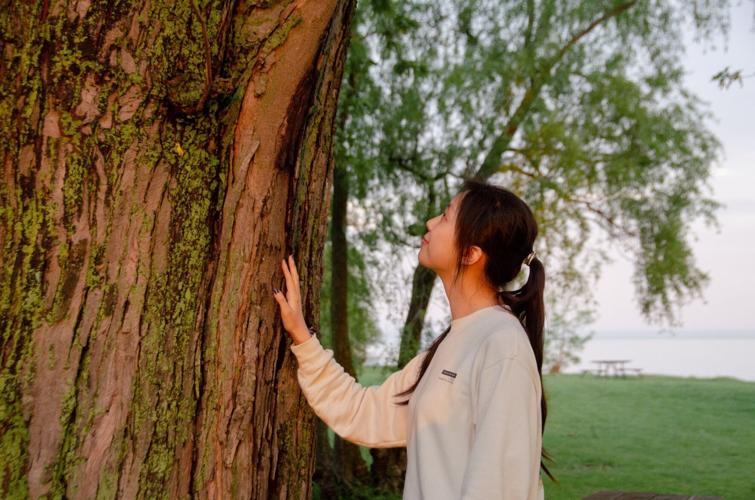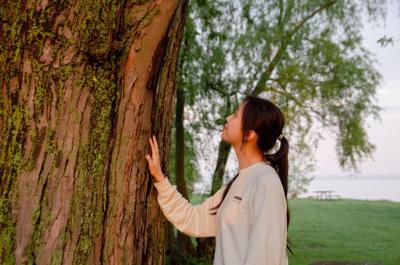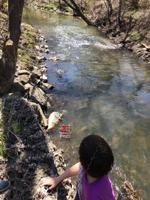I was 21 the first time I went camping — and honestly, I hadn’t planned on it.
It was part of a summer job I landed as a communications and project assistant at Ontario Parks. During the interview, someone mentioned I’d help out with video projects — “You’ll probably get to go camping,” they said. I nodded like it was no big deal. In reality, I had never so much as touched a tent.
Sunnybrook Park became a refuge for editor-in-chief Nicole MacIntyre’s family, rekindling their appreciation for the outdoors.
Sunnybrook Park became a refuge for editor-in-chief Nicole MacIntyre’s family, rekindling their appreciation for the outdoors.
Camping just wasn’t something I grew up with. My family is from China, and while we travelled a lot — to the dramatic sandstone pillars of Zhangjiajie, the crystal lakes of Yunnan and the terraced fields carved into green hillsides — nature was something we visited, admired, and then left behind. We didn’t stay in it.
So that June, when I visited Selkirk Provincial Park, a small, often overlooked patch of forest and shoreline hugging the edge of Lake Erie, I felt like I was stepping into another world. The park wasn’t filled with jaw-dropping scenery. No cliffs, no waterfalls, no postcard-perfect views. Instead, it offered something quieter: tall trees rustling in the breeze, trails that glowed gold in the light of the setting sun and the constant, comforting sound of waves brushing the lake’s edge.

Estella Ren in Selkirk Provincial Park in the summer of 2022.
Estella RenI arrived with colleagues who kindly brought along all the gear I’d need — most of which I had no idea how to use. I had a small tent, a sleeping bag and exactly one camping outfit borrowed from a friend. With the help of a very patient coworker, I learned how to pitch my tent — more or less. We hammered in the last peg, stood back to admire our lopsided handiwork, and then came the first surprise of the day: thunder.
From forested ravines to reclaimed landfills, these trails offer scenery, history and beginner-friendly paths just beyond ��ѻ��ý’s city limits.
From forested ravines to reclaimed landfills, these trails offer scenery, history and beginner-friendly paths just beyond ��ѻ��ý’s city limits.
Within minutes, a summer storm rolled in. It poured — hard. The kind of rain that slaps the earth sideways. I dove into my little tent, zipped it shut, and sat cross-legged in the middle of the floor while the wind rattled the fly. Just 10 centimetres from my head, rain pelted the thin fabric like drumsticks. I should have been terrified. Instead, I burst out laughing. I trusted my little tent, and in that moment, I felt something I hadn’t expected: a strange sort of joy.
When the rain cleared, we gathered for lunch. Most of my coworkers pulled out Tupperware packed with pasta salad or sandwiches. I had something different: a self-heating hotpot from an Asian supermarket. I poured in cold water, waited 15 minutes, and the container hissed to life. Steam poured out, and soon the smell of spicy chicken and rice filled the air. My coworkers stared like I’d conjured it from nothing. “Eastern magic,” I told them, grinning.

Selkirk Provincial Park, nestled along the Lake Erie shoreline, offers quiet beauty, rustling trees, and golden trails that helped Estella Ren discover the gentle magic of camping.
Estella RenThat afternoon, I was assigned to film a short video: “Five things to do in Selkirk Provincial Park.” At first, I wasn’t sure what to focus on. I was used to grand vistas and natural spectacles — the kind of landscapes that demand attention. But Selkirk was quiet. It whispered instead of shouted. I ended up filming my colleague walking slowly down a wooded trail, lounging across a tree trunk, skipping stones at the lakeshore and chatting softly around a campfire. The footage wasn’t dramatic, but it captured something else — the essence of being outdoors, unhurried and present.
Now decades later, Jo-Anne Robertson reflects on how Camp Huronda gave her tools to live with type 1 diabetes and a community that still supports her.
Now decades later, Jo-Anne Robertson reflects on how Camp Huronda gave her tools to live with type 1 diabetes and a community that still supports her.
It hit me slowly: camping isn’t about what you see. It’s about how you live, even just for a night. It’s brushing your teeth with cold tap water at the campsite. It’s playing cards by lantern light. It’s being still. It’s laughing when your marshmallow catches fire and turns into a blackened sugar torch. It’s sitting around doing nothing — and realizing that’s the whole point.
That trip changed something in me. Since then, I’ve made a point of getting outside more. A few weeks ago, as soon as the weather in ��ѻ��ý began to warm, I couldn’t wait to hop on the ferry to ��ѻ��ý Island. I watched swans and goslings glide across the water, then lay in the grass under the shade of a tree and drifted into an afternoon nap. I didn’t do anything remarkable. And yet, I left feeling more grounded than I had in weeks.
These excursions with my grandpa over many summers ignited a flame.
These excursions with my grandpa over many summers ignited a flame.
Camping taught me to love nature not for its drama, but for its quiet. For its invitation to slow down. And for the way it always makes space for you — even when you show up with no clue what you’re doing.
Not every kid gets that chance, which is why programs like the ��ѻ��ý Star Fresh Air Fund matter. If you’re able, consider donating to help more children experience the joy, freedom and confidence that come from a summer spent outside.
The ��ѻ��ý Star Fresh Air Fund
How to donate:
Online:
To donate by Visa, Mastercard or Amex using our secure form.
By cheque:
Mail to The ��ѻ��ý Star Fresh Air Fund, 8 Spadina Ave., ��ѻ��ý, ON M5V 0S8
By phone: Call 647-250-8282
Tax receipts will be issued.
FOLLOW US ON SOCIAL:
Instagram: @torontostarchildrenscharities
Facebook: @thetorontostarchildrenscharities
X: @TStarCharities
LinkedIn: The ��ѻ��ý Star Children’s Charities
TikTok: @torstarchildrenscharity
#StarFreshAirFund



























